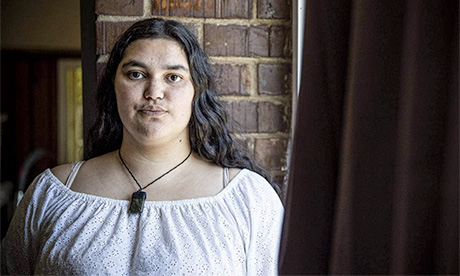When Hine Joseph was 18 years old, she was living on the street and carrying a penknife for protection.
Three years later, she is securely housed in a flat managed by VisionWest Community Trust, in West Auckland, and says her biggest goal is finding a regular job and, one day, moving into a place she owns.
In many ways, her experience is played out in statistics.
As a Māori woman, she is part of an ethnic group that experiences homelessness or severe housing deprivation at a rate four to five times that of European New Zealanders, according to research from the University of Otago.
Māori are also more likely to live in damp, mouldy, and overcrowded home than almost any other ethnicity, according to Stats NZ.
For Joseph, her homelessness story began after Child, Youth and Family, now Oranga Tamariki, dropped her off on her sister’s doorstep as a 17-year-old.
Her sister was aged 25 and a single mum with a young baby, and the living situation was untenable.
She left the house and started telling family she was staying with friends. The reality was she spent her nights jumping between bus stops.
Things improved, Joseph says, when she got her hands on a tent and sleeping bag.
“To me the scary part was knowing there were other kids my age and younger going through this s…. They don’t have any support, so they’ve been left with nothing.
“I met a few youngsters like that, and they were far worse off than I was. It kind of made me feel a bit bad, but I was just stoked to have my little tent and what I had – a little gas cooker.”
There were occasions when Joseph came close to having to use the knife she carried for protection, including once when a man grabbed her from behind late at night.
Joseph eventually went into a Work and Income office towards the end of 2018 and asked for help to pay for a flight, so she could go to live with her mother in Gore.
She spent about a year there, working at a Z station and living in her own caravan, before returning to Auckland and couch-surfing between family and friends.
In May 2020, VisionWest found her a home through the Housing First programme. Since then, she has been looking for a job.
“I feel like having a house puts you in place more, it makes you want to go out and be more motivated.”
Homelessness disproportionally hits Māori and Pasifika
Kate Amore is a research fellow with He Kāinga Oranga at University of Otago and has studied homelessness in New Zealand for a decade.
“From 2001 to 2018, the Pasifika rate of homelessness was 6-10 times the European rate; for Māori, it was 4-5 times the European rate,” Amore said.
“Homelessness has been a big problem in Aotearoa for some time but our awareness of its true size and nature is more recent.”
Amore said positive steps had been made, but homelessness could only be solved by large-scale action on affordable housing supply and increasing incomes.
Children and young people under the age of 25 make up nearly half the homeless population, and 15-24-year-olds had the highest rate of homelessness of all age groups, she said.
Things likely to get worse
“As rents become more unaffordable for people on low incomes, we should expect more people to become homeless, particularly the most vulnerable, who are least able to compete in the rental market,” Amore said.
“Most will find some form of temporary accommodation, most commonly staying with family or friends, but as long as they cannot access permanent housing of their own [i.e. a social or private rental], they are homeless and likely under extraordinary stress.
“Most low-income households are in private rentals, which is inherently more insecure than ownership or social housing.
“The new tenancy law changes are a welcome step towards improved security of housing for renters.”
Amore said the most recent published estimates suggest 41,644 people, or 9 in every 100 Kiwis, were experiencing severe housing deprivation. Contiue reading
Additional readingNews category: Analysis and Comment.




